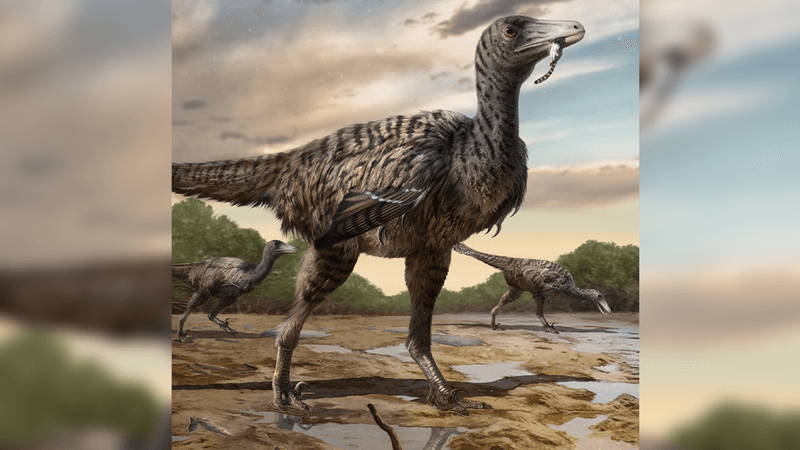Meet Australopithecus deyiremeda, a previously unknown human ancestor species who lived alongside Lucy’s species, Australopithecus afarensis, in Ethiopia over 3 million years ago. The jawbones and a few isolated teeth of the new hominin (that’s us and our extinct ancestors) are described in Nature this week.
On March 4, 2011, a left upper jaw complete with a few teeth (pictured above) was discovered on top of sandstone in the Burtele area of Woranso-Mille in the central Afar region of Ethiopia. Later that day and the day after, two lower jaws were discovered: one was found in the Burtele area in two pieces (the left half is pictured below to the right), the other was found at a locality called Waytaleyta about two kilometers away. Based on the geology, radiometric dating, paleomagnetic data, and the rate of sediment deposition, the layer the fossils had weathered out of was between the ages of 3.3 and 3.5 million years. The area is just 35 kilometers north of Hadar, where Lucy was discovered.
When an international team led by Yohannes Haile-Selassie from the Cleveland Museum of Natural History analyzed the fossils, they found that the size and shape of the teeth are more similar to known Australopithecus specimens than other hominin genus – but their features are distinct enough to warrant a new species. The cheek bones were situated more forward than Australopithecus afarensis, and the part of the lower jaw that connects to the cranium had a more forward position, University College London’s Fred Spoor writes in an accompanying New & Views article. And some of the cheek teeth are notably small.
 The species name comes from the local Afar words "deyi" meaning "close" and "remeda" for "relative" – referring to how the new species is a close relative of all later hominins.
The species name comes from the local Afar words "deyi" meaning "close" and "remeda" for "relative" – referring to how the new species is a close relative of all later hominins.
Another specimen that may have belonged to Australopithecus deyiremeda was previously unearthed in 2009: a 3.4-million-year-old partial right foot from Burtele. The team described the fossil in 2012, but it wasn’t possible to assign it to any known hominin species at the time. The Burtele partial foot indicated that multiple early hominin species lived 3 to 4 million years ago, but many researchers were arguing that at any given moment, there was only one species, which would then give rise to another.
Australopithecus bahrelghazali from Chad and Kenyanthropus platyops from Kenya were thought to have co-existed with eastern Africa’s Australopithecus afarensis, which lived from 2.9 to 3.8 million years ago. However, their validity has been questioned because of distorted fossils and the scarcity of specimens. Australopithecus deyiremeda is the most conclusive evidence that multiple closely related hominin species were contemporaries prior to 3 million years ago.
"The new species is yet another confirmation that Lucy’s species, Australopithecus afarensis, was not the only potential human ancestor species that roamed in what is now the Afar region of Ethiopia during the middle Pliocene," Haile-Selassie says in a news release. "Current fossil evidence from the Woranso-Mille study area clearly shows that there were at least two, if not three, early human species living at the same time and in close geographic proximity."
Although, what led to this diversity and exactly how more than one species coexisted in a stable ecosystem remain open questions for now. Casts of the jaws are pictured below.

Images: Yohannes Haile-Selassie (top, middle), Laura Dempsey (bottom)




